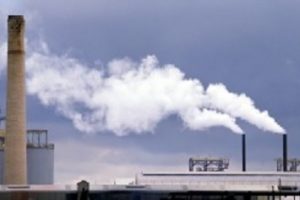Pyrolysis, a process that converts certain post-consumer plastics into fuel and other chemistry products, has the added benefit of emitting low amounts of air pollution when compared to facilities in some industrial sectors.

That’s the main conclusion of a report funded by the American Chemistry Council (ACC), which has many members that manufacture plastic or the chemicals used in manufacture. The report, Comparison of Plastics-to-Fuel and Petrochemistry Manufacturing Emissions to Common Manufacturing Emissions, was written by Good Company, a sustainability firm based in Eugene, Oregon.
The PTFP Process
In pyrolysis—also called plastics-to-fuel and petrochemistry (PTFP)—plastic is heated in the absence of oxygen and halogen until it melts and the polymer molecules break down to form gaseous vapors. The condensable gases are converted to fuel and chemistry products while the noncondensable gases are collected separately and either combusted for process energy or flared. Some of the products the technology can make include fuels for transportation or boilers/furnaces, lubricants, waxes, or even feedstocks (such as naphtha or monomers) to produce new chemicals and plastics.
The ideal plastic resin feedstock depends on the intended end product. Generally speaking, resins that yield greater amounts of useful end products include high-density polyethylene (HDPE), low-density polyethylene (LDPE), linear low-density polyethylene (LLDPE), polypropylene (PP), polystyrene (PS), and some engineered resins labeled as #7 Other via the Resin Identification Code (RIC).
Criteria Pollutants and HAPs
The report addresses emissions of both Clear Air Act (CAA) criteria air pollutants—ozone, volatile organic compounds (VOCs), particulate matter (PM), sulfur dioxide (SO2), nitrogen dioxide (NO2), carbon monoxide (CO), and lead—and hazardous air pollutants (HAPs), primarily benzene, toluene, ethyl benzene, and xylenes.
The study’s authors modeled the “typical PTFP facility” as one that processes 15,000 tons per year of inbound plastics.
“A typical PTFP facility’s CAP [criteria air pollutant] emissions as a group are not comparable to any single industry,” the authors state. “However, several of its individual CAP emissions are comparable to those of numerous specific, well-regulated facilities that are required to report to the EPA under the Clean Air Act.”
For the typical PTFP facility, the reported findings are as follows:
- VOCs and PM-10 emissions from a typical PTFP facility are roughly comparable to those from smaller-than-average food and snack processing plants.
- SO2 emissions are roughly comparable to those from smaller-than-average institutions (hospitals, universities, and prisons).
- NO2 emissions are roughly comparable to those from average institutions (hospitals, universities, and prisons).
- CO emissions are comparable to those from average auto manufacturing operations.
- HAP emissions average 2.4 tons per year.
According to the report, emissions from a typical PTFP facility would not require a federal CAA permit or face other CAA regulations either for any criteria air pollutant or for HAPs.
“These technologies offer a unique way to recover mass, energy and polymer feedstocks from plastics that are not recycled in commercial markets and are currently being landfilled,” conclude the authors.
The report is available here.
